|
| Contact US | CANCUN VIDEO - - | - - WEATHER | |||||||
|
ESPAÑOL |
DEUTSCH |
FRANCE |
ITALIANO |
CHINESE |
PORTUGUES |
RUSSIAN |
||
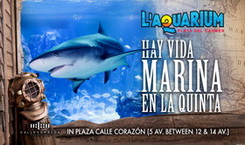
|

|
||||||||||||||||||||||||||||

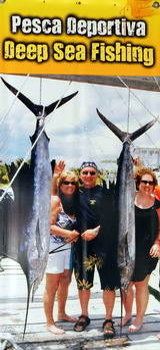 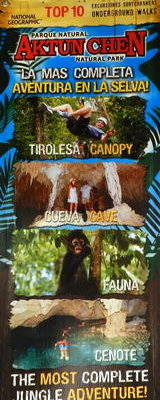 
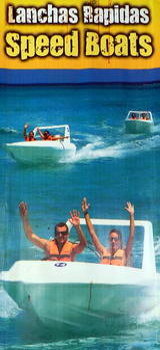 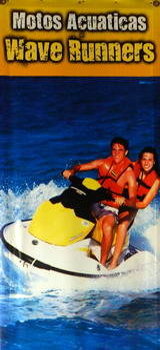 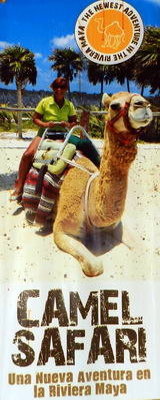 |
MAYAN ARCHAEOLOGY -
MAYAN CALENDAR - MAYAN ASTROLOGY MAYAN ZODIAC SIGNS
End of an ERA begin of a new one At 0000 local time (0600 GMT) on Wednesday
December 21, 2011, he began to pass the year 5128 of the fifth sun set on the
solar calendar of the ancient Mayan culture, which in turn began on the 13th of
August 3114, and, according to scientific evidence found on steal, sphinxes and
Maya codices, predicts "a new era" for humanity. Explaining the MAYAN CALENDAR The Maya counted by
days, all the way forward from a mythical beginning on August 11,
3114, DC. (Eric Thompson"s correlation). That momentuous day
was on a 4 Ahau 8 Cumku. Suposedly, the universe would also end
on another 4 Ahau 8 Cumku. In order to keep track of these
thousands of days, they ddvelo,pe.d a unique system of time
keeping based on their base-20 numbers. MONTH NAMES of HAAB Calendar
DAY NAMES of TZOLKIN Calendar (Maya Name Meaning)
Both calendar combination give us 360 days period with names: 1 TUN = 360 days
MAYAN ASTROLOGY & ZODIAC SIGNS comparison
Mayan constelations - Solar calendar - Tzolkin - Mayan Calendar
Mayan sites to visit on this Mayan new era
The ancient city covers
a six square mile area on the peninsula, about 80 miles east of
Merida. The first major buildings to be built at Chichen-Itza
were begun in roughly 600 A.D. There are numerous well-restored
and fascinating buildings on the site. Perhaps the most
magnificent is El Castillo (the castle), otherwise known as the
Pyramid of Kukulcan. The collosal pyramid is topped by a square
temple, in which ritual sacrifices were made. Contrary to the
popular belief that the Maya were a peaceful tribe, they were, in
fact, very warlike and conducted many religious sacrifices. The
pyramid also reflects the advanced skills the Maya had in
astronomy. The total number of steps on the building is 365, and
on the vernal and autumnal equinoxes, the sun casts a shadow on
the pyramid which resembles a huge snake slithering down the
front staircase. The Temple of the Warriors is another
interesting building on the site. The temple closely resembles the architectural styles of the Toltecs, but researchers are still debating whether the Maya copied to style from the Toltecs or the Toltecs copied the style from the Maya. The latter is more likely, as the Maya had been established and powerful for many centuries at the time of the Toltecs’ rise to power. The Maya were avid sports fans, judging from the 22 ball courts found on the site. The largest of these, known simply as the great ball court, is 270 feet long, has sloping walls, and two small temples, one at each end. It was not uncommon to offer a human sacrifice to the gods before a game. The sport was very serious to the Maya. Often, the captain of one team was sacrificed at the end of the match, but curiously, due to the honor the Maya gave those who were sacrificed, historians are unable to determine whether the winner or loser was sacrificed. Regardless, the great ball court is a fascinating location on the site. Carved in relief on one wall is the image of a player being decapitated. Another interesting aspect of the court is the temple at the north end, known as the Temple of the Bearded Man. The acoustics of this
temple, whether done on purpose or by accident, allow a person
talking in a normal speaking voice to be heard far down the
court. There are several theories as to why this might be. It
could have served as a “dugout” of sorts for a team
coach to send commands to his players, or it could have served as
a “press booth” from which a spectator could report the
events to the common masses outside, who were not allowed to
watch the game. These are just a few of many wonders Chichen-Itza
has to offer. Should you visit, one full day can provide you with
an overview, but to truly see the ancient city, plan a two-day
excursion.
TULUM (Reserve a Tulum Tour)
The name of Tulum, apparently coined early in the 20th century, refers to the walls that surround the site on three sides, since Tulum is Mayan for fence, enclosure, or wall. However, it is believed that it was originally called "zama", dawn, an apt name indeed for his east coast city where the sunrise in beheld daily. This pre-columbian city is built upon a scarp which rises abruptly from the Caribbean sea. Its ruins stretch along the coast for almost four miles. In its heyday, Tulum, served as an important port town linking up the sea and inland trade which played a basic role in its economy. Out on the coast of Mexican Caribbean, located almost opposite the island of Cozumel, the Tulum archaeological site proudly displays the architecture treasures of the Mayas in a lush jungle setting typical to the area. Now a National Park covering over 1600 acres, the site of the contemporary Tulum ruins forms part of a major Mayan city of the post-classical period. With recesses containing images of flowers and animals carved in colored stucco. Tulum is unique in that it is the only archaeological site of such magnitude located on the coast. In itself, this adds to the attraction due to its fabulous beaches and turquoise waters ideal for diving. The castle highlights among these, crowned with pilasters of toltec culture influence. Temple V has a unique shape as their walls are slanted toward the outside. It also contains paintings very well preserved. Over the door stands out a figure of the descending god. The temple of the Frescos (pinkness) is decorated with a noticeable estucco mask at the eastern angle. You still can admire inside the remainders on the wall paintings that seems to reproducer some code pages. Down the cliffs, you will find one of the most beautiful beaches in the world. In Tulum, you may explore the site, camp and shop for the typical and archaeological pieces, also you may enjoy the Papantla flyers ceremony, this mexican rite is perform at the mall's levelled. You may enjoy a refreshing swim and get a nice suntan at the beautiful beaches and crystal water. Once you get to Tulum it is advisable to hire a guide. This way you will learn history and legends of the area. Light clothing and comfortable shoes are advisable as you may have long walking periods and we recommend the use of sun blocks to avoid sunburn.
COBA
Coba's urban sprawl covered a total area of at least 44 square miles. Within this vast territorial realm a number of monumental-size buildings were erected, as well as lesser structures and an extensive network of causeways. These stone roads interconnected the various clusters of buildings and Coba with other nearby or more remote ancient cities. Two of the latter were Yaxuna and Ixil, 60 and 11.5 miles away, respectively, in the modern states of Yucatán and Quintana Roo. The Mayans also carved stone slabs, their stelas, on which inscriptions recorded outstanding or special events stemming from the activities and achievements of their rulers. Today, over 30 stelas, several altars, and panels have been located. In this role as a key supplier of goods and services, Coba had full sway over a region today comprising the north of state of Quintana Roo. Coba's hegemony crumbled, new cities arose on the Caribbean coast, Tulum and Muyil. Coba Cluster, one structure to be seen here is known as the Church, which owes its name to local hunters and farmers who visit it regularly to make offerings, pray, and light candles before the stela associated with this building. The Church pyramid, entered from the east side of the main plaza, is made up of nine rounded-corner levels which together give it a total height of 80 feet. On the north side of the east building there is a roofed tunnel with a Mayan vault that runs under one of the stone stairways leading to the top. The Coba Cluster also has a ball court. It is located north of the Church pyramid and consists of two edifices built on a north-south axis. The Unit of Paintings features buildings roofed with vaulting, at the ground level and the summits of the pyramid mass, which were constructed with recycled stones from the older buildings. Room interiors were decorated throughout with various pictorial motifs, from this grouping's name. The most recently restored group of buildings at Coba is the Nohoch Mul. This Myayn name means "big mound". The pyramid's seven levels have their corners rounded, and its height of 40 feet makes it the loftiest building in the north of the Yucatan Peninsula. In Coba you may shop at the store situated at the entrance, and they sell several handcrafts and clothing from this region. For those excursionist, this is an ideal place, as its jungle is an invitation to explore. Coba is surrounded by places where you may camp. Its advisable to wear light clothing and comfortable shoes as you will do a lot of walking. Take along mosquitoes repellent, as Coba is the middle of the jungle.
Ek Balam, also known as the City of the
Black Jaguar, enigmatic archaeological site recently discovered is an ancient
Mayan city ruin site. This ancient city reached the height of its importance
from 600 to 900 CE until it was abandoned, has an unique style evident in the
beauty of its walled buildings and well preserved sculptures. Mundo Maya (The Mayan World) In 1986, an extraordinary meeting took place between the governments of Mexico, Belize and Guatemala. The topic was the development of an ambitious, unprecedented cooperative project to unify the development of an enormous region inhabited by the Mayan culture. A year later El Salvador and Honduras joined the group and the first multi-national integrated tourism development project in the Americas was underway. Despite
some early setbacks, and inherent problems associated with an
effort of this magnitude, Mexico has spearheaded the development
of a "singular," unified tourism product that
encourages travel across state and international boundaries to
explore a region inhabited for over 2,000 years by the Mayan
civilization. The effort strives to bring together Mexico's
well-developed tourism infrastructure with lesser-known sites.
Promotional programs aim to boost awareness of the Mayan World's
many leisure/adventure travel options.
|